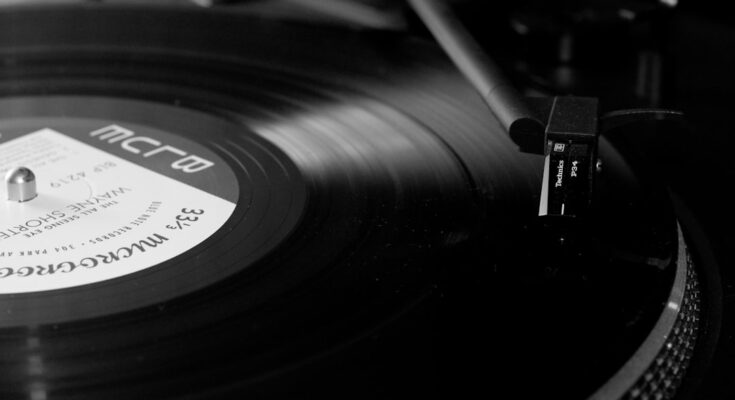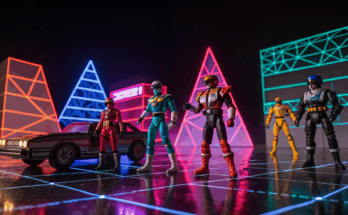As an ambitious amateur music producer, I often find myself lost in the labyrinth of sound, where every note is a potential doorway to a new world. Jazz, with its improvisational spirit and rich history, has always been my muse. But lately, I’ve found myself pondering a curious question: what happens when the improvisational genius of jazz meets the cold, calculated logic of artificial intelligence?
The thought alone sends shivers down my spine—like the first time I heard Coltrane’s “Giant Steps.” It’s a thrilling prospect, one that could redefine the very essence of jazz composition. AI in jazz composition is not just a passing trend; it’s a burgeoning field that invites both excitement and skepticism.
“You can’t program a soul into a machine,” he said, puffing on his pipe like a jazz philosopher. Yet, I couldn’t help but argue that AI could be a new bandmate—one that never sleeps, never gets tired of jamming, and can churn out ideas faster than I can say “syncopation.” The fusion of human creativity and machine learning could lead to uncharted territories in jazz, and I’m here for it.
Key Takeaways
- AI is revolutionizing jazz composition by offering new tools and techniques for musicians to explore.
- AI is shaping new sonic landscapes in jazz composition by pushing the boundaries of traditional music creation.
- AI tools and techniques for jazz composition include machine learning algorithms, neural networks, and natural language processing.
- Collaborative approaches between humans and AI in jazz composition are leading to innovative and unique musical creations.
- Ethical considerations in AI-generated jazz composition include issues of authorship, ownership, and cultural appropriation.
The Role of AI in Shaping New Sonic Landscapes
Unlimited Creative Possibilities
As I explore the world of AI and jazz, I am fascinated by the potential of these algorithms to shape new sonic landscapes. Imagine a digital canvas where every brushstroke is a note, and every color is a chord progression. AI can analyze vast amounts of jazz recordings, learning from the greats while also experimenting with new sounds that might never have crossed my mind.
A New Source of Inspiration
It’s like having an infinite library of jazz knowledge at my fingertips, ready to inspire my next composition. One day, while experimenting with an AI tool called AIVA (Artificial Intelligence Virtual Artist), I stumbled upon a melody that felt both familiar and alien. It was as if the AI had taken the essence of Miles Davis and blended it with something entirely new—like a musical smoothie that somehow worked.
Pushing the Boundaries of Jazz
I shared this discovery with my friend Sarah, a pianist who often rolls her eyes at my tech obsession. “It’s like jazz on steroids,” she quipped, but even she couldn’t deny the potential for innovation. The role of AI in shaping these new sonic landscapes is not just about replication; it’s about exploration and pushing boundaries.
AI Tools and Techniques for Jazz Composition
The tools available for AI-driven jazz composition are as varied as the styles within the genre itself. From machine learning algorithms that analyze chord progressions to generative models that create entirely new compositions, the possibilities are endless. I’ve dabbled with tools like OpenAI’s MuseNet and Google’s Magenta, both of which have opened my eyes to the potential of AI in music production.
It’s like having a secret weapon in my creative arsenal. One particularly memorable session involved using an AI tool to generate a bass line for a track I was working on. I inputted some basic parameters—tempo, key, and style—and let the algorithm do its thing.
When the bass line popped up on my screen, I couldn’t help but laugh. It was funky, unexpected, and had me grooving in my chair like I was at a live jam session. “This is what happens when you let a computer take over,” I joked to my roommate, who was trying to concentrate on his homework.
But deep down, I knew that these tools were not just gimmicks; they were gateways to new creative possibilities.
Collaborative Approaches: Human-AI Jazz Composition
The idea of collaboration between humans and AI in jazz composition is where things get really interesting.
I often think of it as a duet—me on the piano and the AI providing unexpected harmonies that challenge my musical instincts.
This collaborative approach can lead to compositions that are richer and more complex than anything I could create alone. During one of my late-night jam sessions, I decided to invite an AI into the mix. I played a simple chord progression on my keyboard while feeding it into an AI model designed for real-time improvisation.
The result was nothing short of magical. The AI responded with melodic lines that danced around my chords, creating a dialogue that felt alive. “It’s like having a ghostwriter for jazz,” I told my friend Mark, who was skeptical at first but soon found himself tapping his foot to the infectious groove we had created together.
This experience solidified my belief that human-AI collaboration could lead to groundbreaking compositions that honor the spirit of jazz while embracing innovation.
Ethical Considerations in AI-Generated Jazz Composition
As thrilling as this journey into AI-driven jazz composition is, it doesn’t come without its ethical considerations. The question of authorship looms large—if an AI generates a piece of music, who owns it? Is it the programmer who created the algorithm, or is it the musician who provided the input?
These questions often lead to heated debates among my fellow musicians and producers. I remember discussing this topic over coffee with Emma, a fellow music enthusiast who has her own reservations about AI in art. “If we let machines take over creativity, what happens to our humanity?” she asked, her brow furrowed in concern.
While I understand her perspective, I countered with the idea that AI could be seen as a tool rather than a replacement. Just as synthesizers revolutionized music production in the ’80s, AI can enhance our creative expression without diminishing our humanity. It’s all about how we choose to use these tools and ensuring that we maintain our artistic integrity.
Exploring New Sonic Possibilities: AI and Jazz Fusion
One of the most exciting aspects of integrating AI into jazz composition is the potential for fusion with other genres. Jazz has always been about blending influences—be it blues, rock, or world music—and now we have the opportunity to incorporate elements from electronic music or even hip-hop through AI-generated compositions. This fusion can lead to innovative sounds that challenge traditional notions of what jazz can be.
I recently attended a local music festival where an experimental jazz group collaborated with an AI system to create live compositions on stage. The result was an electrifying performance that seamlessly blended jazz improvisation with electronic beats and synthesized sounds. As I watched the musicians interact with the AI in real-time, I couldn’t help but feel inspired by the endless possibilities this fusion could bring to the genre.
“This is jazz 2.0,” I whispered to myself, envisioning a future where boundaries between genres blur and new sonic landscapes emerge.
Impact of AI on Jazz Composition: Perspectives from Musicians
The impact of AI on jazz composition is not just limited to my own experiences; it resonates throughout the music community. Musicians are beginning to embrace these technologies in various ways, each bringing their unique perspectives to the table. Some view AI as a valuable collaborator that can spark creativity, while others remain cautious about its implications for artistic expression.
During a recent panel discussion at a music conference, I had the opportunity to hear from several accomplished jazz musicians about their thoughts on AI in composition. One guitarist shared how he uses AI-generated chord progressions as a starting point for his own compositions, allowing him to break free from creative blocks. Another musician expressed concern about losing the human touch in music if we rely too heavily on technology.
Their diverse perspectives highlighted the ongoing dialogue within the community about how best to integrate AI into our creative processes.
Future Directions: AI and the Evolution of Jazz Composition
As I reflect on this journey through the intersection of AI and jazz composition, I can’t help but feel optimistic about what lies ahead. The future holds immense potential for innovation and exploration as we continue to push boundaries and redefine what jazz can be. With each new tool and technique that emerges, we have the opportunity to create music that resonates with both our human experiences and the capabilities of technology.
In conversations with fellow musicians and producers, there’s a palpable sense of excitement about what’s next for jazz composition in this digital age. Whether it’s through collaborative approaches with AI or exploring new sonic possibilities through fusion with other genres, one thing is clear: jazz will continue to evolve as we embrace these advancements while honoring its rich history. As an ambitious amateur music producer navigating this landscape, I’m ready to dive headfirst into this brave new world—one note at a time.
For those interested in exploring new sonic landscapes in music, check out this article on Synthwave and Retrowave. These genres offer a unique blend of electronic and retro sounds that can inspire creativity and innovation in music composition. By incorporating elements of these styles into your work, you can push the boundaries of traditional music genres and create something truly original. Integrating AI into jazz composition is just one way to experiment with new sounds and techniques, and exploring different genres like synthwave and retrowave can provide even more inspiration for your musical endeavors.
Check Out Our Music Producer Class!
FAQs
What is AI in jazz composition?
AI in jazz composition refers to the use of artificial intelligence technology to assist or generate musical compositions in the jazz genre. This can involve using algorithms and machine learning to analyze and create jazz music.
How does AI integrate into jazz composition?
AI integrates into jazz composition by using algorithms to analyze existing jazz compositions, identify patterns, and generate new musical ideas. It can also be used to assist human composers in the creative process by providing suggestions and variations.
What are the benefits of integrating AI into jazz composition?
Integrating AI into jazz composition can provide new creative possibilities, help composers overcome creative blocks, and generate innovative musical ideas. It can also assist in exploring new sonic landscapes and pushing the boundaries of traditional jazz composition.
Are there any challenges in integrating AI into jazz composition?
Challenges in integrating AI into jazz composition include ensuring that the technology captures the essence and improvisational nature of jazz music, as well as addressing ethical considerations surrounding the use of AI in creative processes.
How is AI changing the landscape of jazz composition?
AI is changing the landscape of jazz composition by offering new tools and approaches for musicians and composers to explore. It can inspire new musical directions, facilitate collaboration between human and machine creativity, and contribute to the evolution of jazz as an art form.



